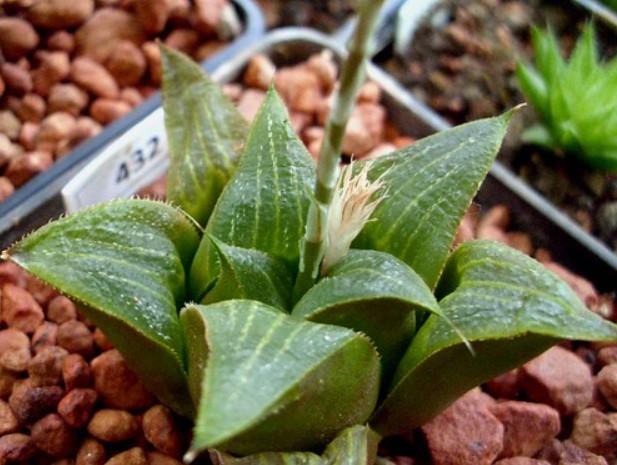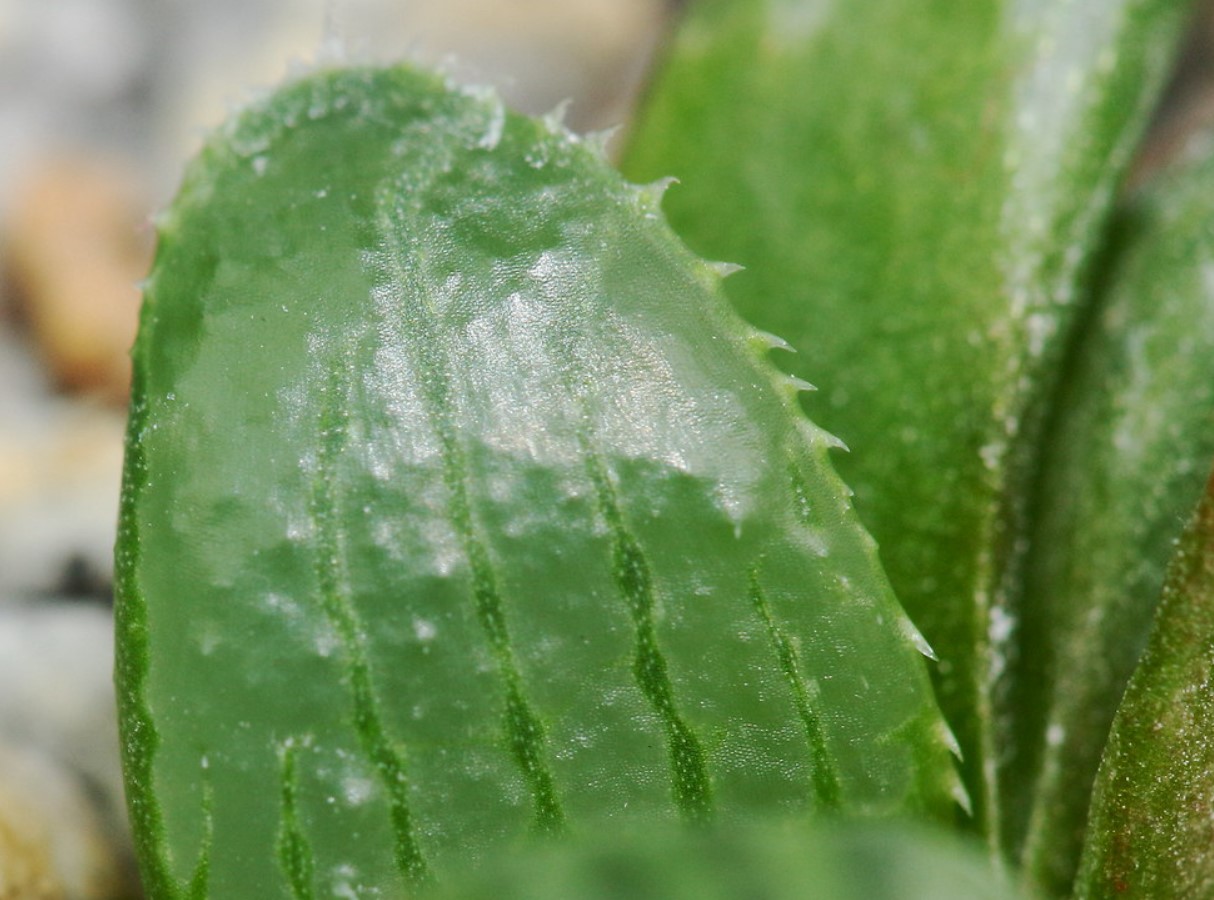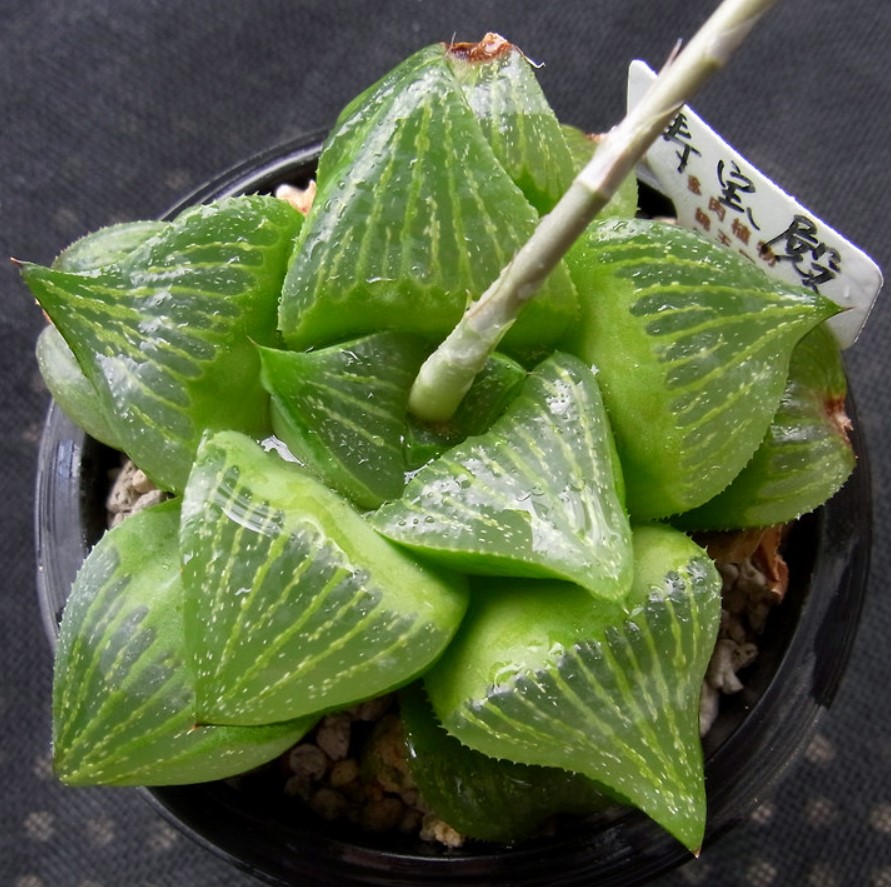The Haworthia retusa, a star cactus, is gaining favor in the indoor gardens of many. Its leaves, shaped like stars, give it a distinct look. It’s a succulent that asks little of its keeper, making it ideal for those with little time for tending plants. This haworthia is not only easy to care for but also hardy.
It grows strong roots and often produces offsets—new plants that make propagation straightforward. Even those who are not gardeners by nature can find success with this plant. It’s about the basics: light, water, and a bit of attention now and then.
The Haworthia retusa is a good plant for people who don’t have much time. Its leaves are like stars. It doesn’t need much from you to grow well indoors. You can make more plants easily from its offsets. The roots are tough.
| Key Takeaways |
|---|
| The Haworthia retusa star cactus is an ideal choice for those with busy lives seeking a touch of greenery without the fuss. |
| Its unique star-shaped foliage sets it apart as an attractive piece in any plant collection. |
| Caring for this succulent is straightforward, making it well-suited to indoor growth conditions. |
| Propagation through offsets is simple, allowing even novice gardeners to expand their collection effortlessly. |
| The robust root system and overall hardiness of the Haworthia retusa ensure its resilience as a houseplant. |

Discovering the Unique Qualities of the Haworthia Retusa Star Cactus
The Haworthia retusa, or star cactus, is a unique succulent. Its leaves are fat, shiny, and shaped like triangles. They come together like a starburst. It’s different from other haworthias, like the Haworthia limifolia, known as the fairies washboard.
Here’s how it stands out:
| Feature | Haworthia retusa | Haworthia limifolia |
|---|---|---|
| Leaves | Thicker and more translucent, letting light show off patterns inside. | Dark green with ridges, not as smooth or light. |
| Texture | Glossy with window-like tips that catch the eye. | Rougher to the touch due to ridges. |
| Appeal | Its glossy leaves draw attention in any plant arrangement. | Its striking contrast offers a different kind of beauty. |
The retusa is admired for its looks and ease of care. It comes from South Africa and likes light but grows well in shade too—like under rocks or other plants.
To keep one at home, mimic its natural semi-arid home. Give it light but not too much direct sun. Then you can watch this charming succulent thrive right where you live.

The Ideal Growing Conditions for Haworthia Retusa Star Cactus
Growing healthy Haworthia plants is about getting the basics right. There are four: light, soil, water, temperature. Master those four things and the succulents will thrive. Fail in any one area and you will struggle.
Start with the light. Haworthia live outdoors in bright indirect sun. They do not want harsh midday light beating down on them. But without ample sunlight the plants grow leggy and weak. Put them in the wrong light and the leaves burn or become dull. Place the Haworthia where there is brightness but the midday sun does not touch them directly.
The soil matters greatly too. Haworthia soil must drain fast. Wet soil will rot the roots. Mix in gritty sand and pebbles to keep the soil loose. And use a pot with holes so excess water can escape. Soil that holds water will doom the plant. Well-draining soil will make it flourish.
Also go light on the water. A little goes a long way with Haworthia. During growing seasons when the plant is active, keep the soil just moist. In cooler months let the soil dry out more between watering. Soaked soil when the plant is not growing means disaster. Learn the plant’s cycles and water accordingly.
Finally, keep the Haworthia at a nice warm room temperature, neither too hot nor too cold. And do not let the air become too humid. The succulent prefers less moisture in the air. Situate it where the room stays a comfortable warmth day and night if you wish it to stay healthy.
Follow these rules for light, soil, water and temperature rigorously. The Haworthia is not a demanding plant if you give it what it requires. Mind the basics and you will enjoy the beauty of your thriving succulents for years.

Mastering Haworthia Retusa Star Cactus Care Techniques
Our journey to cultivate the quintessential Haworthia retusa star cactus involves attentive care and specific techniques tailored to its needs. As we delve into the practical aspects of nurturing this succulent, our focus will be on water management, soil and potting structure, and optimal light and temperature conditions.
Watering: Striking the Right Balance
Ensuring the right amount of moisture is critical for the health of your succulent. Haworthia retusa requires a consistent watering schedule, which entails providing enough water to keep the soil slightly moist but not waterlogged, making it a perfect plant for those seeking drought-tolerant options. To prevent root rot, allow the soil to dry out between waterings, ensuring the roots aren’t sitting in excess water.
Soil and Potting: Ensuring Proper Drainage
The choice of soil and pot is paramount in averting root rot and other moisture-related issues. A well-draining soil mix containing components like peat moss and perlite facilitates appropriate drainage. Additionally, selecting a pot with adequate drainage holes and considering repotting every few years can significantly improve the health and longevity of your Haworthia retusa.
Light and Temperature: Simulating Native Habitats
Mimicking the light and temperature conditions of the Haworthia retusa’s natural environment is key to its growth. These succulents flourish in settings with plenty of indirect light and some periods of bright light, akin to the dappled sunlight of their native terrain. While they enjoy the warmth of sunlit days, protecting them from scorching temperatures and ensuring cooler conditions during the winter months aligns with the typical diurnal temperature variances they would experience in nature, complemented by occasional natural rainfall.

Common Issues and Solutions in Caring for Haworthia Succulents
When nurturing Haworthia plants, understanding the risks and remedies associated with pests, fungal diseases, and the nuances of growth can be pivotal for a thriving succulent. Here, we unpack the strategies and procedures that underpin successful plant care.
Tackling Pests: Identification and Prevention
Pests, including mealybugs and spider mites, can be detrimental to Haworthia plants. Signs such as white spots and sticky honeydew on leaves are common indicators of infestation. To battle these unwelcome guests, we harness preventative measures and the select application of horticultural oils. It’s imperative to prevent these insects from taking hold and undermining the plant’s health.
Combating Root Rot and Other Fungal Diseases
Maintaining suitable soil drainage is crucial to prevent over-saturation and root rot, a condition exacerbated by excess moisture. Fungal diseases pose a significant threat to Haworthia succulents, often stemming from wet conditions. Our guidance focuses on identification, treatment, and critical prevention tactics to safeguard the plant’s vitality.
Promoting Healthy Growth and Avoiding Common Problems
The route to robust growth comprises timely transplantation to a new pot and discerning when to place offsets from the mother plant into individual pots. We’ll delve into propagation methods involving leaf cuttings and seeds, which can significantly expand burgeoning collections of this splendid succulent.
| Issue | Cause | Prevention/Treatment |
|---|---|---|
| Pests (Mealybugs, Spider Mites) | Poor plant hygiene, high humidity | Inspect regularly, apply horticultural oils as needed |
| Root Rot | Poor soil drainage, excessive watering | Use well-draining soil, moderate watering routine |
| Fungal Diseases | Excess moisture, lack of air circulation | Ensure good airflow, reduce ambient humidity |
| Stunted Growth | Insufficient light, compacted soil | Provide bright, indirect light, repot when necessary |
Conclusion
In the journey to demystify the care of the resilient Haworthia retusa star cactus, we’ve covered an array of horticultural insights that affirm its position as an excellent plant for indoor gardens. These succulents provide an opportunity to bring a touch of nature into your space without requiring the demanding upkeep of more temperamental flora. Fully embracing the plant care practices detailed in our article will enable you to harness the full potential of growth, propagation, and the joy of cultivating your own thriving botanical piece.
Recalling how to nurture the roots, protect against pests, and address common concerns, it becomes clear that the success of these plants ties heavily to proactive and informed care routines. By promoting a healthy environment, we can enjoy the continual development of offsets that expand our collections and our gardening prowess. The processes of propagation we’ve explored—from separating pups to trying your hand with seeds—offer a rewarding path for both novice and experienced gardeners alike.
To conclude, we leave you with a reinforcement of the notion that the Haworthia retusa is more than just an appealing succulent—it’s a testament to the beauty and resilience of plants, and a mirror to the care and attention we invest in them. As you embark on your own cultivation adventure, may your indoor oases flourish, channeling the hardy essence and aesthetic allure of the humble yet majestic star cactus.
FAQ
What is a Haworthia Retusa Star Cactus?
The Haworthia retusa star cactus is a distinctive succulent known for its translucent, star-shaped leaves. It’s a slow-growing plant that is often prized by collectors because of its unique appearance and ease of care, making it ideal for indoor gardens and offices.
How do I care for a Haworthia Retusa Star Cactus?
Caring for a Haworthia retusa star cactus involves ensuring it receives plenty of bright, indirect light, is planted in well-draining soil, and is watered appropriately. Avoid overwatering by allowing the soil to dry out between waterings, and protect the plant from extreme temperatures.
What are the ideal light and temperature conditions for Haworthia Retusa?
Haworthia Retusa thrives in bright, indirect light. Direct sunlight can scorch the leaves, so it’s best to place them in a location where they are protected during the hottest part of the day. They prefer warm temperatures between 65-80°F (18-26°C) during the day and slightly cooler temperatures at night. Avoid exposure to frost or temperatures below freezing.
How often should I water my Haworthia Retusa Star Cactus?
Water your Haworthia retusa star cactus sparingly, only when the soil has completely dried out from the last watering. During active growth periods, usually in the spring and fall, it may require more frequent watering. In the winter months, reduce watering significantly as the plant enters a dormant period.
What type of soil is best for Haworthia Retusa Star Cactus?
The best soil for Haworthia retusa star cactus is a well-draining cactus or succulent mix. You can also make your own mix using a combination of potting soil, peat moss, and perlite or sand to increase drainage. Good soil drainage is crucial to prevent root rot and other moisture-related issues.
When and how should I repot my Haworthia Retusa?
Repot your Haworthia retusa star cactus every few years or when you notice the roots are becoming crowded in the pot. The best time to repot is during the active growth period in the spring or early summer. Use a new pot that is slightly larger than the previous one and has good drainage.
Can Haworthia Retusa Star Cactus produce offsets?
Yes, Haworthia retusa star cactus is known to produce offsets, or “pups,” which can be separated from the mother plant and potted individually to propagate new plants. Allow the offsets to develop good roots before transplanting them into their own containers.
How do I deal with pests on my Haworthia Retusa?
To deal with pests on Haworthia retusa, such as mealybugs and spider mites, isolate the affected plant to prevent the spread. Remove visible pests with a soft cloth or a gentle stream of water. Use insecticidal soap or horticultural oils as a treatment, and always follow the product’s instructions. Regular inspections and maintenance can help prevent pest infestations.
What are the signs of root rot in Haworthia Retusa, and how can I treat it?
Signs of root rot in Haworthia retusa include yellowing or mushy leaves, a foul odor coming from the pot, and black or brown roots that are soft to the touch. To treat root rot, remove the plant from the pot, trim away the rotted roots, and repot in fresh, well-draining soil. Make sure to adjust your watering practices to prevent recurrence.
Is Haworthia Retusa Star Cactus toxic to pets?
No, Haworthia retusa star cactus is not toxic to pets. It is considered safe around cats and dogs. However, it’s always good practice to keep plants out of reach to prevent any potential nibbling that could damage the plant or cause digestive upset in pets.
